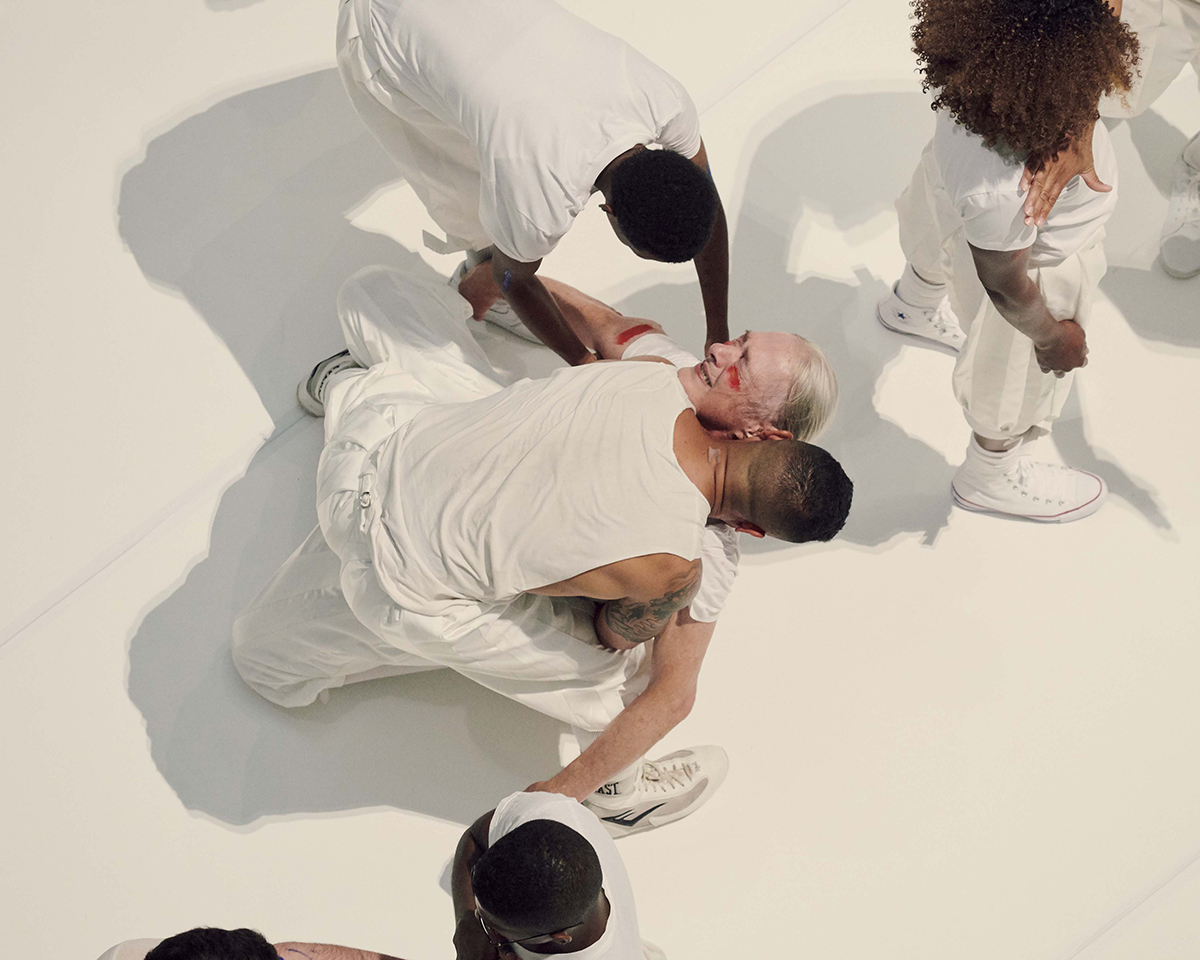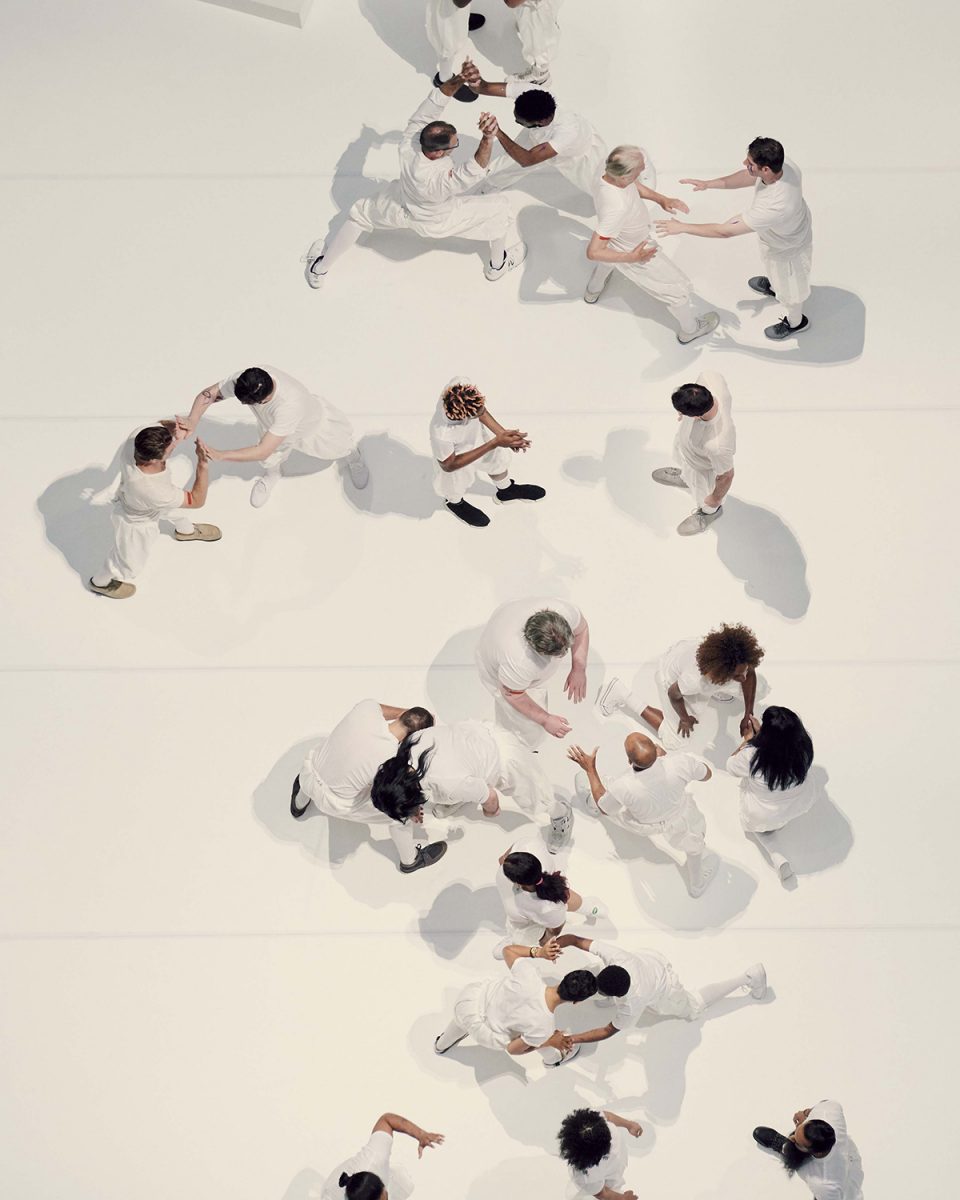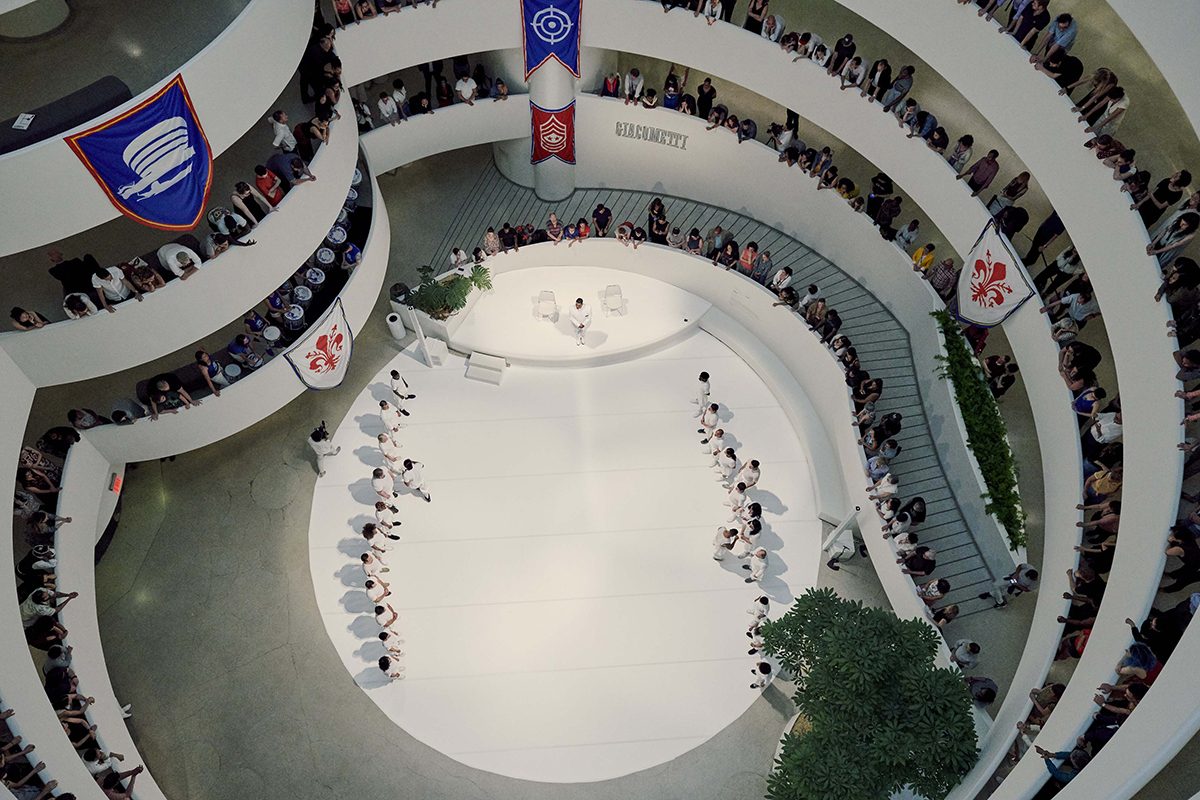
In The Loop: silent bodies debate violence
An email exchange with Hobart-based RealTime contributor Lucy Hawthorne incidentally revealed that she was in New York “doing a two-week performance art residency with an emphasis on social engagement” and that she’d “just seen Shaun Leonardo’s Primitive Games performed at the Guggenheim. It was pretty spectacular, transforming the Guggenheim’s massive atrium into an arena. This first iteration of the work focuses on gun violence, bringing together police officers, people affected by gun violence, recreational firearms users and veterans.”
The New York Times previewed Primitive Games revealing the work to be inspired by Calcio Storico (“historical football”), a violent community ‘sport’ — often a no holds barred physical fight — mixing soccer, rugby, wrestling and boxing. Held once a year in Florence, possibly from the 14th century on, when not occasionally banned, it was initially a game for aristocrats until becoming broadly communal with four teams representing the quarters of the city.
In an ArtNet interview titled “Can Calcio Storico, an Ultraviolent Ancient Italian Sport, Help Heal Our Political Divides? Artist Shaun Leonardo Thinks So” Leonardo, who works on a non-profit, sentence-reducing “art-diversion” program for young people prosecuted for misdemeanours, has developed a non-violent, wordless, movement-based, body language version of the game to be enacted as a “debate” by volunteer participants in the museum.
Primitive Games was commissioned by the Guggenheim’s Social Practice initiative and aims to defuse violent situations in various circumstances and escalated by the violent, un-nuanced use of language in current public and political discourse. In the ArtNet interview, Leonardo argues, “So if we can more carefully read how our bodies move during these times, during these experiences, these memories of conflict, how is it that we can use that skill to better read someone that we’re perceiving to be ‘other’?”
I’m intrigued by Leonardo’s phenomenological strategy at a time when protests against gun violence in the USA are increasing on the street and in the lobbying of politicians. I wonder what art, other than plays and television series, can bring to the issue, even on small and, optimistically, viral scale. Lucy’s response is not encouraging:
“The arena floor and participants’ clothes are the same white as the museum’s walls, and the result is visually slick but also somewhat sanitising. As with many such projects, the success of Primitive Games cannot be measured purely in terms of the end performance, but I do question whether performing the work for a relatively small art world audience at the Guggenheim can really effect cultural and political change. Addressing gun violence in the USA through socially engaged art while guns are so readily available seems akin to trying to fix a life-threatening wound with just a flimsy bandaid.”
Whatever its limits, the project is appealing as perhaps one of a number of potential strategies to engage creatively with violence in unexpected ways. I’m curious to see how it evolves.
–
Top image credit: Primitive Games, photo © Vincent Tullo/The New York Times/Headpress








